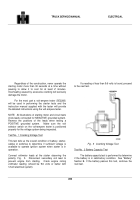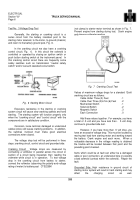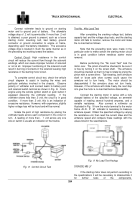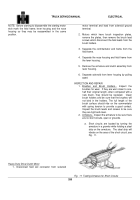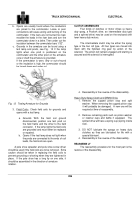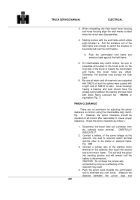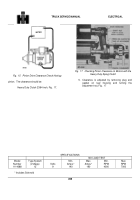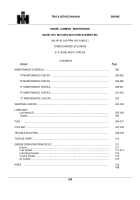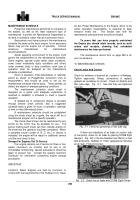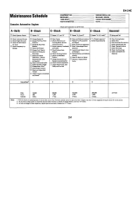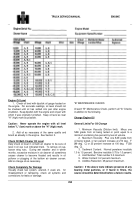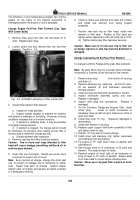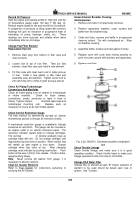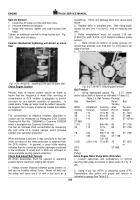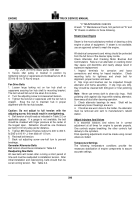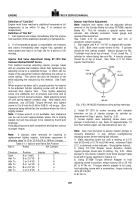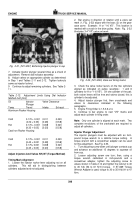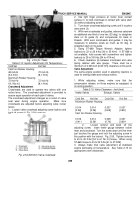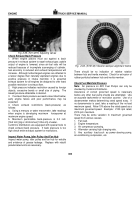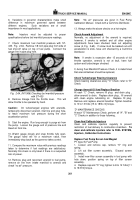TM-5-3805-254-14-P-2 - Page 296 of 894
TRUCK SERVICE MANUAL
ENGINE
Engine Oil Level
1. Check oil level with dipstick oil gauge located on
the engine.
For accurate readings, oil level should not
be checked until oil has settled into pan after engine
shutdown.
Keep dipstick with the engine and oil pan with
which it was originally furnished.
Keep oil level as near
"H" (high) mark as possible.
Caution:
Never operate the engine with oil level
below "L" (low) mark or above the "H" (high) mark.
2. Add oil as necessary of the same quality and
brand as already in the engine.
See Section 3.
Check Oil Bath Cleaner Oil Level
Daily check oil level in oil bath air cleaner to be sure oil
level in oil cup is at indicated mark.
To remove oil cup,
loosen wing nuts.
During wet weather and in winter
months, excessive moisture in air cleaner oil sometimes
causes cleaner to become flooded and results in oil
pullover or plugging of the bottom air cleaner screen.
Add or change oil as necessary.
Check Completely For Damage
Visually check fuel system, aneroid, if used, etc.
for
misadjustment or tampering, check all systems and
connections for leaks or damage.
"B" MAINTENANCE CHECKS
At each "B" Maintenance Check, perform all "A" Checks
in addition to the following.
Change Engine Oil
General Limits For Oil Change
1. Minimum Viscosity (Dilution limit):
Minus one
SAE grade from oil being tested or point equal to a
minimum containing five percent by fuel oil volume.
2. Maximum Viscosity:
Plus one SAE grade from
oil being tested, or ten percent increase at 210 deg.
F
[99 deg.
C] or 25 percent increase at 100 deg.
F [38
deg.
C].
3. Sediment Content:
Normal penetane insoluble
1.0 to 1.5 percent.
Benzine insoluble 0.75 to 1.0 percent.
4. Acid Number: Total number 3.5 maximum.
5. Water Content: 0.2 percent maximum.
6. Additive Reduction: 25 percent maximum.
Caution:
If the above tests indicate presence of any
bearing metal particles, or if found in filters, the
source should be determined before a failure results.
292
Back to Top

